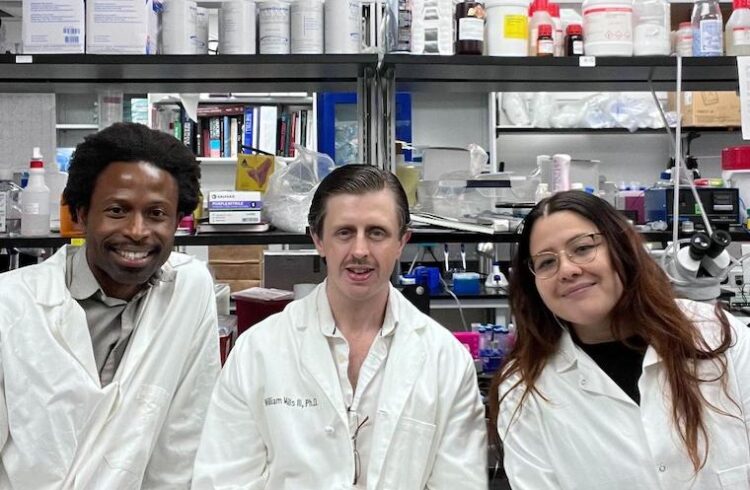
For about 30 percent to 35 percent of bile-duct cancer patients, a biopsy produces a false negative, says University of Virginia Health System gastroenterologist Michel Kahaleh, MD, director of UVA’s Pancreatico-Biliary Program. But patients at UVA who may have digestive cancer or other digestive conditions such as Crohn’s disease can benefit from a diagnostic technique that provides doctors with a clearer picture of whether cancer or another disease is present.
The technique, called confocal endomicroscopy, is only available at a limited number of medical centers in the U.S. At the beginning of the exam, Kahaleh injects the patient with fluorescein, a fluorescent dye used for decades in exams by eye doctors. Kahaleh then uses an endoscope with a laser probe to view the gastrointestinal tract. “With confocal endomicroscopy, we can look inside the wall of the gastrointestinal tract and look at the cells themselves,” Kahaleh says.
The fluorescein makes cancerous or other abnormal cells turn dark when viewed with the laser, while healthy cells appear clear since they retain the fluorescein. Providing a clearer picture of whether a patient has cancer or another gastrointestinal disease helps patients receive the treatment they need sooner, Kahaleh says.
“Confocal endomicroscopy helps us confirm our diagnosis,” he says. “We can therefore send the patient to surgery or even begin other treatment the same day as the exam.”
For 51-year-old liver transplant recipient Brett Morgan, confocal endomicroscopy was able to confirm that he didn’t need any additional treatment. Since his 2007 transplant at UVA, doctors had twice placed stents in his bile duct for a biliary anastomotic stricture, a tightness at the junction between the donor’s bile duct and the patient’s own bile duct that occurs frequently in liver transplant patients. Morgan’s doctors wanted to confirm that there was nothing causing the difficult-to-treat stricture, such as any type of disease or lack of blood flow.
So in December 2010, Morgan had his second stent removed and had a confocal endomicroscopy performed by Kahaleh. Morgan was placed under a general anesthetic around 8:30 a.m.; his procedures were complete around 10:30 a.m. By noon, Morgan’s wife was driving him home, and they knew the stricture was healing and that there were no underlying diseases or conditions that had caused the stricture. Morgan says he and his family felt relieved after hearing the results from the confocal endomicroscopy. “Just having the peace of mind is nice,” he says.
He appreciates UVA’s efforts to find out all the information they could about his condition. “They’re always looking for better ways to do things,” he says.
Morgan is one of about 60 patients who have undergone confocal endomicroscopy at UVA. It can be used throughout the gastrointestinal tract, Kahaleh says, including the stomach, colon, esophagus, rectum, bile duct or pancreatic duct. Along with cancer, confocal endomicroscopy can help diagnose a variety of non-cancerous conditions, including inflammatory bowel disease, colitis, chronic pancreatitis and gastritis.


